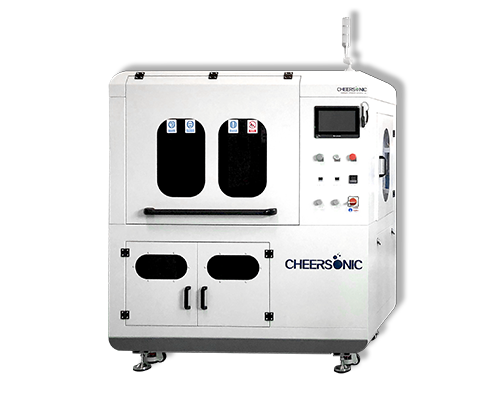Microfluidic Chips and Challenges
Microfluidic Chips and Challenges – Laboratory Diagnostic Device Coatings – Cheersonic
Microfluidic chips are devices that use micron-scale fluid channels to process fluids. Taking advantage of its small size, it can handle Picoliter and nanoliter fluids, so it can greatly reduce sample consumption, reduce the cost of biological detection, and improve the reaction rate. It has great application prospects for drug development, disease diagnosis, and micro-scale biological research.
The above mentioned are all great prospects in this field, but to finally realize these prospects, it is necessary to develop products that can compete with current mainstream equipment. The bottleneck lies in the following aspects:
1. For individualization, the direction of POC detection requires the miniaturization of the entire device. Most of the current research is still in basic biology and chemistry, and the detection method is light microscopy. The advantages of the light display are obvious to all, but the disadvantage is that it is bulky and expensive. To develop in this direction, it is necessary to find new sensor chips that are conducive to integration, including magnetic sensing, various electrochemical sensors, etc.
2. For the study of basic biology. At present, microfluidic chips have entered the laboratory for basic research in biology. In fact, this direction does not require high detector volume, so the research can be carried out only by using the existing traditional optical microscopes in the laboratory, such as confocal laser scanning microscopes. The role of the microfluidic chip here is to provide microscopic fluid control technology to observe new phenomena such as cells and chemical reactions at this scale. The transformation of traditional instruments, the introduction of microfluidic channels, combined with the characterization of traditional optical instruments, has been commercialized.
3. Large-scale drug screening. This is a very popular and promising direction for microfluidic chips, and it is also the most challenging direction. The current drug development platform is mainly based on microplate, which consumes a lot of volume and has a long screening period. If the microfluidic platform can realize the basic functions of this microplate, then there is hope to become the next generation drug screening platform. The challenges faced are the coding, isolation, and detection of drugs. Combining multiple functions on one platform involves engineering fluid pipeline design, chip integration and other issues. Droplet microfluidics is currently one of the platform technologies that can adapt to large-scale drug screening. How to effectively manipulate and encode droplets is a problem that needs to be solved.

Ultrasonic spray can be used to deposit active and inactive coatings on microfluidics and other diagnostic and medical test kits. Expanding technologies in point-of-care, in-vitro, and laboratory diagnostic device coatings has led to increased need for precision coatings of active and non-active layers in manufacturing these devices. Ultrasonic nozzles can spray in any direction, coating targeted areas, complex 3 dimensional-shaped devices, and small components uniformly with very little overspray. Ultrasonic spray coatings are highly controllable, offering very high transfer efficiency for precise thin films of solutions or suspensions such as biopolymers, proteins, EDTA, Heparin, amino acids, enzymes, blood plasma and preservatives.
